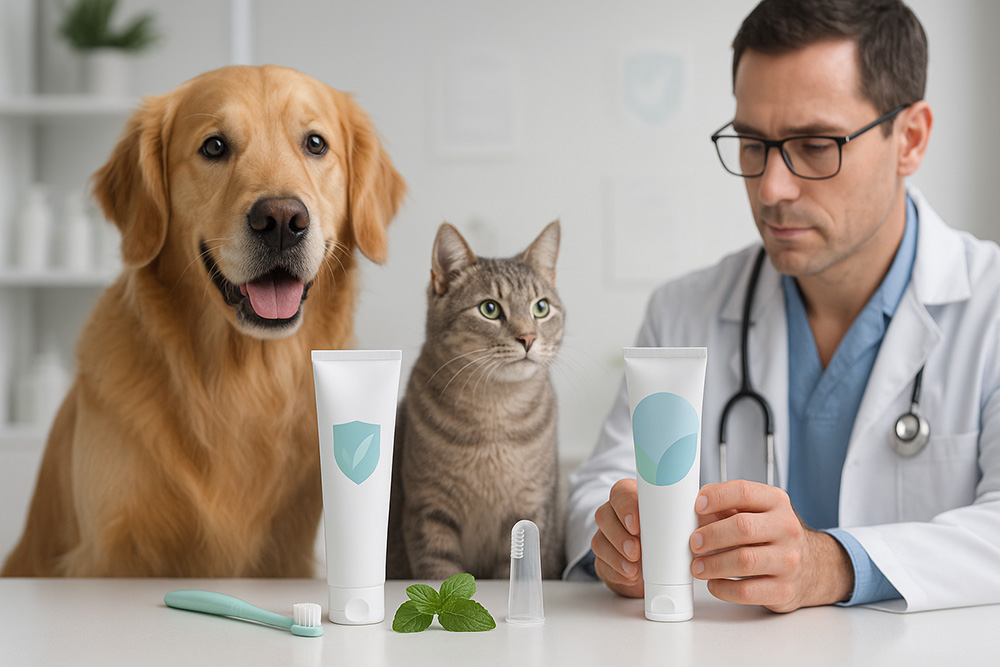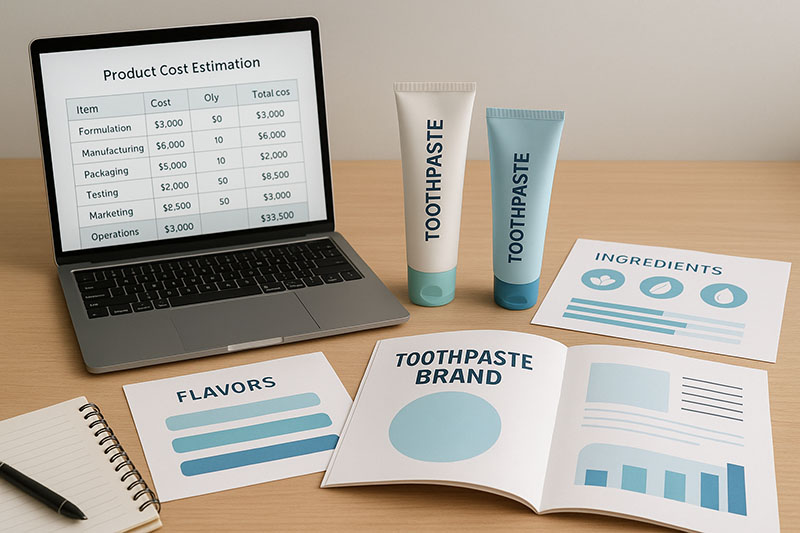Certifications & Approvals for a U.S. Pet Toothpaste Brand

1) First, decide what your product is in the eyes of regulators
Your claims determine the legal pathway:
Animal Drug (therapeutic/structure–function claims): e.g., “treats gingivitis,” “kills oral bacteria,” “reduces periodontal disease.” Requires FDA CVM drug status and drug-grade GMP.
Grooming Aid (non-therapeutic cleaning/fresh breath claims): e.g., “helps clean teeth when brushing,” “freshens breath.” No FDA premarket approval, but claims must avoid disease/structure implications.
Animal Food / Specialty Pet Food (if positioned as swallowable for nutritive purpose): facility + label rules, often state registration per AAFCO-modeled requirements.
Decision tip: If you want speed-to-market, stay in the grooming-aid lane and keep claims strictly cosmetic/cleaning. If you need medical outcomes on pack, plan for the drug pathway.
2) If you pursue the Animal Drug pathway
Mandatory
Achieve an FDA CVM legal marketing status (NADA/ANADA, conditional approval, or indexing), and appear in/align with the Green Book program.
Manufacture under drug cGMP (21 CFR 210/211) and follow drug labeling/promo rules. (CVM has recent, active oversight of drug claims.)
Nice to have (signal quality, not a substitute for FDA approval)
Independent QMS certifications (e.g., ISO 9001) to document robust process control.
3) If you stay a Grooming Aid (most pet toothpastes)
Mandatory
No FDA premarket approval if claims are strictly cleansing/beautifying; avoid disease/structure claims or you convert into an unapproved new animal drug.
Truth-in-advertising (FTC): All claims—express and implied—need prior substantiation (“competent and reliable scientific evidence”). Applies to websites, Amazon pages, social media, pack inserts.
Pack basics: Comply with NIST Handbook 130 dual-unit net quantity norms adopted by many states (U.S. customary + SI).
Voluntary but powerful
VOHC Seal (Veterinary Oral Health Council) for plaque/tartar control products with appropriate clinical evidence.
4) If regulators treat it as Animal Food / Specialty Pet Food
(Occasionally happens for swallowable gels/pastes positioned for ingestion.)
Mandatory
FSMA animal food rule: CGMPs + Preventive Controls (21 CFR 507) and a written food safety plan.
Labeling per 21 CFR 501 (name, net quantity, manufacturer/distributor, ingredients by common/usual name, etc.).
State licensing/registration following AAFCO model regulations (varies by state). Use AAFCO’s Startup resources and state-by-state contacts.
Voluntary
NASC Quality Seal for companion-animal ingestibles (audited quality manual, adverse event reporting, label compliance). Retailers recognize it.
5) Ingredient safety you should lock in
Absolutely no xylitol in dog products; it’s acutely toxic to dogs. Make “NO XYLITOL” a spec-line and include pet-only use messaging.
Human toothpaste is not for pets (fluoride/foaming agents/xylitol). Align your consumer education accordingly.
6) “Organic” & “Natural” claims—where things stand (Aug 29, 2025)
USDA Organic (pet food): A final rule clarifying organic pet food standards was published Dec 23, 2024; the effective date was delayed to Mar 21, 2025, with compliance by Mar 22, 2027. On May 12, 2025, USDA proposed rescinding that rule. Until rescinded, the compliance timeline remains posted. Check status before packaging.
“Natural” claims fall under FTC deception standards and (for pet foods) AAFCO guidance—don’t over-promise and keep substantiation files.
7) Country-of-origin & green claims
“Made in USA” (unqualified) now carries civil-penalty risk under the FTC’s Made in USA Labeling Rule (16 CFR Part 323). Use the unqualified claim only if the product is “all or virtually all” made in the U.S.; otherwise, qualify it. Digital ads count as labels. Federal Trade Commission
Environmental claims (e.g., “non-toxic,” “eco-friendly”) must follow the FTC Green Guides—don’t imply universal safety (humans, pets, environment) unless you can substantiate it.
8) Imports and OEM/private-label realities
If you import, you’re the responsible party at U.S. entry. Animal-food-class products must meet FSMA expectations (supplier program, records). Align your claims to avoid unexpected “animal drug” scrutiny at the border.
9) Evidence & claim language—templates you can reuse
Safer “grooming-aid” phrasing (examples):
“Helps clean teeth when used with brushing.”
“Freshens breath.”
“A texture designed to assist with plaque removal during brushing.”
Phrases that trigger the drug pathway (avoid unless filing):
“Treats gingivitis/periodontitis,” “kills oral bacteria causing gum disease,” “reduces tartar without brushing,” “prevents periodontal disease.”
Substantiation file checklist (FTC-ready): test protocols, results, statistics, images, and a claims-mapping matrix tying each claim to its evidence level.
10) Label anatomy you’ll likely need
All pathways: identity (e.g., “Dog & Cat Toothpaste”), net contents in U.S. + SI units, responsible party name/address, lot/date, storage, species, directions/cautions.
Animal-food-class products: follow 21 CFR 501 formatting; ingredients by common/usual name in descending weight order; align with AAFCO model regs where adopted by your sales states.
11) Voluntary quality frameworks buyers expect
VOHC Seal (efficacy for plaque/tartar); plan study design/timelines early.
NASC Quality Seal (quality system + pharmacovigilance for ingestibles).
ISO 9001 (company-wide QMS) and ISO 22716 (cosmetic GMP) are strong signals for grooming-aid manufacturing controls.
12) Roadmap & timing (practical plan)
Claims & pathway lock-in → draft a claims matrix and packaging copy that fits Grooming-Aid or Food or Drug. (Week 0–1)
Formulation & safety spec → exclude xylitol; define dog/cat flavor profiles and abrasives/polishers compatible with companion animals. (Week 1–4)
Quality & testing → stability, micro, packaging compatibility; prep substantiation file for each claim. (Week 4–10)
Label review → build dual-unit nets (e.g., “3.0 oz (85 g)”), mandatory fields, compliant marketing claims; add origin language per FTC rules. (Week 6–10)
Reg filings (if Food) → FSMA program + state registrations (target states first); if Drug, initiate CVM plan. (Week 6–20)
Evidence upgrades (optional) → VOHC protocol, pilot lots for studies. (Parallel).
13) Common pitfalls (and fixes)
Claim drift on DTC pages turning a grooming aid into an unapproved drug → add a pre-launch copy check SOP.
Unqualified “Made in USA” with imported components → switch to a qualified origin claim.
Xylitol in dog SKUs → add “zero xylitol” gate in formulation and incoming-material spec.
Calling a swallowable paste “not food,” but positioning it as nutritive → risk state feed actions; align the pathway and label.
Try Lidercare Now!
We Help You Launch New Products, And Continue To Grow. Try Us With 20% Off Your First Order!
14) About Lidercare — OEM/ODM Pet Toothpaste Manufacturer
We’re a full-service oral-care manufacturer offering custom pet toothpaste development and private-label production for dogs and cats. From white-label to fully bespoke formulas, we help you move from concept to compliant launch—fast.
What we offer
Regulatory-aligned claims & copy: We co-create a claims matrix (Grooming-Aid vs. Food vs. Drug) and pre-clear marketing to avoid claim drift.
Custom formulations: Enzyme systems, gentle polishing systems, flavor sets (poultry, beef, fish, peanut butter, vanilla-mint for cats), dye-free/fragrance-free options, and xylitol-free by design. (We can also build swallowable gels positioned as Food with FSMA support.)
Compliance documentation: COAs, micro & stability, safety summaries, SDS, master labels, and state-registration support (if Food).
Quality systems: Production under robust QMS with cosmetic-GMP style controls (ISO 22716) and company-wide process discipline (ISO 9001) where appropriate for grooming-aid products; food-grade controls for ingestibles.
Efficacy pathways: VOHC study planning and pilot batches to support submissions (if you want a plaque/tartar claim).
Packaging: HDPE/aluminum laminate tubes, airless pumps, finger-brush kits; dual-unit net declarations per NIST UPLR norms.
How we work
Brief & pathway → confirm claims and regulatory lane.
Bench samples → 2–3 iterations for flavor/texture/cleaning feel.
Pilot & testing → stability/micro + pack compatibility; label build.
Scale & launch → state filings (if Food), retail/marketplace packs, and supply-chain documentation.
Final
For fastest commercialization, launch as a grooming aid with careful, compliant claims and NIST-conformant labels—then layer in VOHC.
If you want ingestible positioning, be ready for FSMA + state registrations.
If you want medical claims, plan the CVM drug route early.
FAQs
Do I need FDA approval for pet toothpaste?
Only if you make therapeutic/structure–function claims (it becomes an animal drug). Pure cleaning/fresh-breath “grooming aid” claims don’t need premarket FDA approval.What claims can I make without triggering the drug pathway?
Stick to cosmetic-style language: “helps clean teeth with brushing,” “freshens breath.” Avoid disease claims (e.g., gingivitis, periodontal disease) or “kills oral bacteria.”Is pet toothpaste considered pet food?
Only if positioned for ingestion/nutritive purpose (swallowable gels). Then FSMA animal-food rules and state registrations may apply.What labeling is required?
Identity (e.g., “Dog & Cat Toothpaste”), net quantity in US + SI units, manufacturer/distributor, ingredients, species, directions, cautions, lot/date. If it’s “food,” follow 21 CFR 501.Do I need state registrations?
Usually not for grooming aids. For animal-food–class products, many states require product and/or facility registration before sale.What is the VOHC Seal—do I need it?
The Veterinary Oral Health Council seal isn’t mandatory, but it’s a strong credibility signal for plaque/tartar control and requires controlled clinical data.Are NASC or ISO certifications required?
No. NASC (for ingestibles) and ISO 9001/22716 (QMS/cosmetic GMP) are voluntary quality marks that reassure retailers and vets.Can I say “Made in USA”?
Only if all or virtually all ingredients and processing are U.S.-based. Otherwise, use a qualified origin claim (e.g., “Made in USA with imported components”).Which ingredients should I avoid?
Absolutely no xylitol for dogs. Be cautious with essential oils/actives; ensure species-specific safety. Most brands keep pet toothpaste fluoride-free.How do imports and private label affect compliance?
Importers are the responsible party at entry. Align claims with your chosen pathway; animal-food–class items need FSMA supplier controls and records.How long does a VOHC submission take?
Plan for study design, production of test lots, data collection, and review—often 6–12 months depending on protocol, endpoints, and scheduling.How can Lidercare help me launch?
We’re an OEM/ODM pet toothpaste manufacturer. We map compliant claims, develop xylitol-free formulas, run stability/micro tests, build labels, support VOHC planning, and assist with state registrations when needed.
Table of Contents
Awesome! Share to:
Latest Blog Posts
Check out the latest industry trends and take inspiration from our updated blogs, giving you a fresh insight to help boost your business.



